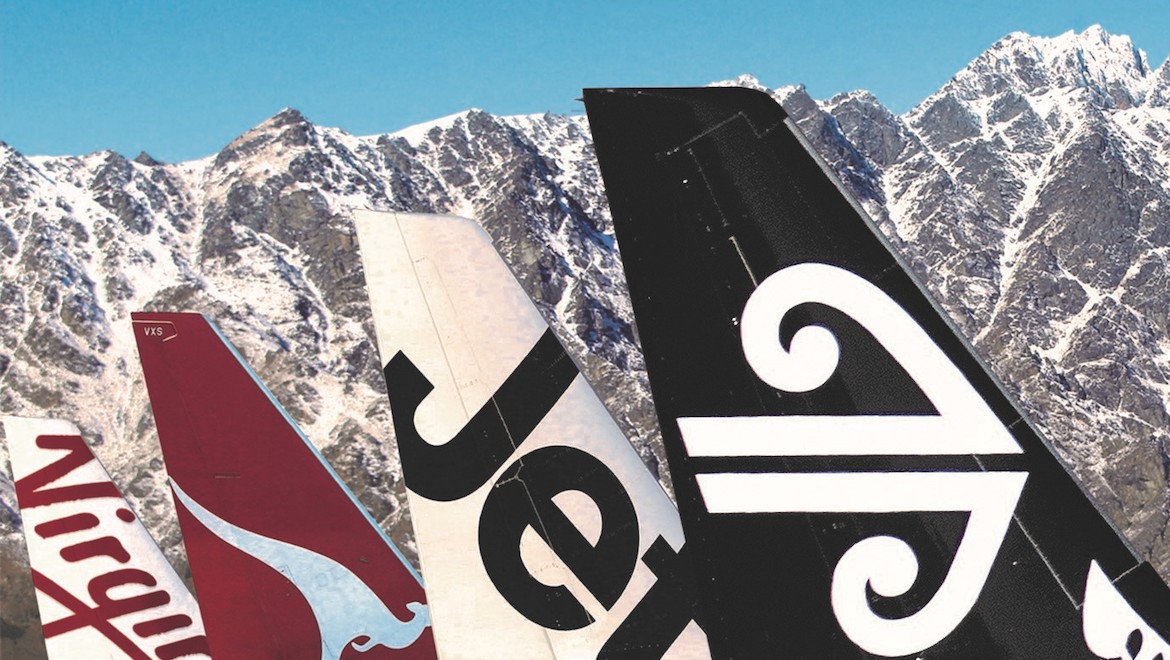
Queenstown, one of New Zealand’s premium tourist resorts, frequents the top 10 lists for the world’s most stunning airport approaches in the annual polls of flight charter, Private Fly. It won the top slot four years ago.
Not only is the scenery breathtaking but the landing can literally take your breath away as the plane wingtips outside the window appear to be almost touching the sides of sawtooth mountains that are about 1,700 metres high and border the narrow basin on the edge of Lake Wakatipu, where the airport sits 357 metres above sea level.
To show the challenge involved in landing a plane in this mountainous terrain, Qantas has released footage of one of its Boeing 737-800 operating flight QF121 from Sydney making the approach, along with simulator images of what pilots face when landing at the airport.
Qantas captain Justin Roberts is featured explaining his first experience of touching down: “While my landing was a little firmer than some customers would have liked, I remember standing at the top of the stairs saying goodbye to passengers while looking at The Remarkables [mountain range to the side of the airport] towering 6,000 feet above me.”
“To fly into Queenstown we need to follow a fairly long and convoluted approach to get us down the valleys to be able to land,” he said.

Depending on the route, aircraft fly above mountain ridges for 10 minutes then down the valley from the north with mountains on both sides, or from the south or east, across Lake Wakatipu and past Queenstown to Frankton at the top of the lake, 7.3 kilometres from the resort town’s centre.
The approach from the north takes in the top of the Coronet Peak ski field and Crown Range down through the valley, over the bungy jump bridge then the Shotover River, famed for its jet boat rides, before making a series of turns and landing, Captain Roberts said.
“The terrain means it is not a typical landing approach,” Captain Roberts said.
He said the terrain created its own unique weather patterns that were great for skiers, but challenging for large passenger aircraft.
Queenstown Airport handled 2.307 million passenger arrivals and departures in the year to April, 10 per cent more than the prior corresponding year. Of that total, 1,658,679 were domestic passengers and 649,163 were from Australia.
VIDEO: A look at the technical side of the approach to Queenstown Airport from the airport’s Vimeo channel.
Because of the conditions, pilots landing in Queenstown not only need to undergo specialised simulator training, but they also have to be able to execute a successful approach and landing with training captains on board.
To help guide them through the valley, they use a Required Navigation Performance (RPN) system to and from the airport.
Unlike a GPS system, RNP is a 3D tube that winds a safe path through the mountains using satellite data to maintain a set track during the approach, monitoring the aircraft’s movement laterally and vertically.
Key altitude and speed information is projected on a heads up display in front of the pilots flying.
Queenstown Airport and advisory firm, Auckland-based Navigatus Consulting, provided Qantas with some of the digital visuals for the video.
VIDEO: Qantas pilot Captain Justin Roberts explains the approach into Queenstown on the airline’s YouTube channel.










